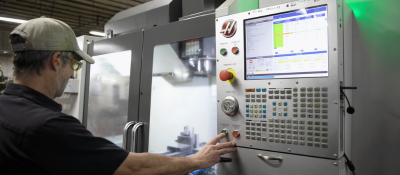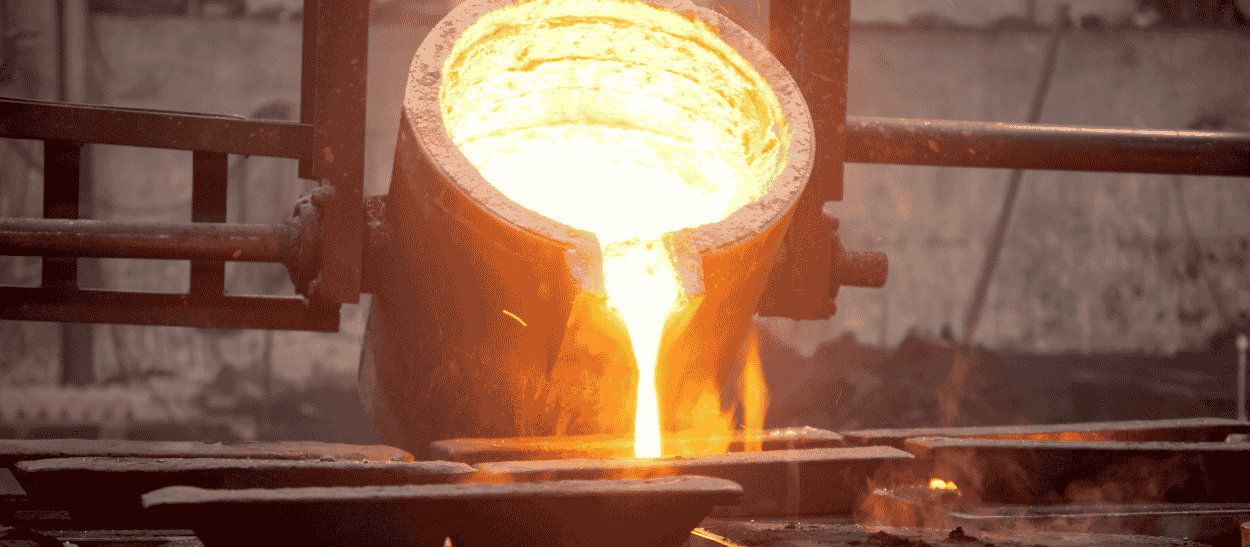Your Cart is Empty

Liquid Ring Vacuum Pump Dos and Don'ts
Liquid ring vacuum pump systems are very versatile and simple in nature. In this article, we discuss the components of a liquid ring vacuum pump, water usage & recirculation options, and best practices when operating this equipment.
Written by Jackson Redline, Engineered System Solutions Project Manager, Rogers Machinery
Estimated read time: 7 minutes
Table of Contents:
- Liquid Ring Vacuum Pump Basics
- Water Usage and Recirculation Options
- What is Cavitation?
- Exhaust Piping
Liquid Ring Vacuum Pumps (LRVPs) are a common type of vacuum pump. They are simple and robust in construction and easy to apply to most systems. However, some common issues with this vacuum pump technology must be considered when improving an existing system or designing a new system for your process. This article will review the basic operation of a liquid ring vacuum pump, recommended features and controls for recirculating the seal water, effects of seal water on pump performance, and installation recommendations for best operation of LRVPs.
Key Takeaways:
- Regular Maintenance — perform routine inspections and maintenance to prolong the pump's lifespan and maintain efficiency.
- Monitor Operating Conditions — keep an eye on parameters like temperature and pressure to detect and address potential problems early.
- Use Appropriate Seal Liquid — Utilize the correct type and amount of seal liquid to ensure optimal performance.
- Avoid Cavitation — prevent cavitation by maintaining proper inlet conditions and avoiding excessive vacuum levels.

FIGURES 1 & 2. Internals of a LRVP showing the liquid ring (in blue) created by the rotation of the eccentrically mounted (off center) impeller. The back plate (on the right) shows the suction port (larger crescent on the left) and the discharge port (smaller crescent on the right).
Liquid Ring Vacuum Pump Basics
The basic operation of a liquid ring vacuum pump involves using a seal liquid — typically water — to create a liquid ring inside the pump that seals gas between the blades of an impeller to compress the gas. The liquid ring is created as the seal water is slung around inside the pump by the eccentrically (off-center) mounted impeller. The pump casing creates larger cavities on the bottom of the impeller revolution and no cavities at the top of the impeller’s revolution, where the gas is forced from the pump.
The seal water provides two main functions in the pump. First, the water seals the gas between the blades of the impeller to prevent it from flowing backward out of the pump. Second, the water absorbs the heat of compression generated when the process gas is compressed.
LRVPs are positive displacement pumps. With every revolution, the pump will capture and discharge a fixed volume of gas. As the impeller rotates, the surface of the liquid ring pulls away from the center of the impeller, creating a growing volume. As that volume increases, the pressure inside that volume decreases. The decreased pressure draws in gas from a relatively higher pressure area (i.e. the inlet/suction of the pump) and continues to draw in the gas until the rotation of the impeller moves past the suction port.
Once past the suction port that volume is now sealed by the impeller blades and the liquid ring. The gas cannot escape that volume. As the impeller rotation comes around further to the discharge, the volume between the impeller blades and the liquid ring becomes smaller, squeezing the gas trapped inside until it is discharged out of the pump at a higher pressure than when it entered the pump at the suction.

FIGURE 3. Internals of a single stage of a liquid ring vacuum pump showing the separate service liquid inlet and pump suction. Note that the discharge is a combination/mixture of the process gas and seal liquid.
The seal liquid is drawn into the pump by the suction generated at the pump inlet and requires a constant flow of new seal liquid into the pump to maintain the liquid ring. The suction of the pump is only the process gas; the discharge of the pump is a mixture of the process gas and the seal liquid. The mixing of the seal liquid and the process gas is what provides the two main benefits of the LRVP technology:
- If the process gas contains condensables, they will typically fall out and condense inside the pump once the pressure is increased from the suction. The newly-condensed liquids will mix and dilute with the seal liquid and discharge out of the pump. The constant stream of new seal liquid will constantly flush the pump, keeping it "clean" in regards to moving condensables from the pump.
- The seal liquid mixing with the process gas removes the heat of compression and will maintain the gas stream temperature rise in the pump to ~30-40°F depending on seal liquid and incoming gas temperatures. Typical seal liquid temperatures should be between 50-75°F so the temperature inside the pump will rarely exceed 100°F. This is ideal if the process chemicals are sensitive to heat (i.e. combustible vapors)
Water is the most common seal liquid, but other liquids can be used as well. Oil is the next most common (which removes some vapor pressure concerns of water that we’ll discuss later, but increases potential chemistry interactions with difficult process gases). If a system has a saturated, condensable liquid load other than water, that liquid may be a good candidate to use as the seal liquid, as the condensed liquid inside the pump will be the same as the liquid ring and will not require separation from another kind of seal liquid at the discharge of the pump.
Note:For the purposes of this article, we will discuss the use of water as the seal liquid in LRVPs as that is by far the most common seal liquid used and has its own unique challenges that all LRVP users will come across – namely the reuse and recirculation of that water.
RELATED: VACUUM RECEIVERS: FULL OF VACUUM OR FULL OF MYTH?
Water Usage & Recirculation Options
It is no secret that liquid ring vacuum pumps can use a lot of water. The technology requires a constant flow of seal water as long as the pump is running. Even for a small LRVP that uses 1 Gallons Per Minute (GPM) of seal water, if it runs 24/7 that amounts to 525,600 GPM for the entire year. That is just shy of an Olympic-sized swimming pool (~660,000 gallons). For any larger LRVP, seal water consumption only increases as the size of the pump increases. Reusing that water — if at all possible — is critical to try and making the pump as efficient as possible for all its utility requirements.
There are 3 main kinds of LRVP systems in regards to recirculation of the seal water: Once-Through, Partial Recirculation, and Full Recirculation. Each has its advantages and disadvantages. The more water recirculation a system will do, the more complex it becomes, and the more components are required to operate and control that system.

FIGURE 4. Sample PID of a Once-Through LRVP system. While this system does show a separator tank on the discharge of the pump, it is also common to find once-through systems that do not have any kind of discharge separation.
Once-Through Systems
Once-Through systems are the most simple kind of LRVP and do not recirculate any seal water from the pump discharge and require a constant supply of fresh seal water at the pump seal water inlet. Generally, these systems consist of a pump driven by a motor on a base with a simple seal water piping arrangement.
The most critical component of a once-through system is a flow control device at the seal water inlet to the pump. This can be a valve or regulator whose function is to prevent the pump from having too little or too much seal water. Too little seal water in a pump and the liquid ring cannot fully seal between the impeller blades. If a seal is not achieved, no vacuum is generated inside the pump and the pump will have no flow. Too much seal water and the pump will not have any space between the impeller blades to allow gas to enter the pump, leading to the same vacuum-less result. A flow control device allows you to regulate the flow of the seal liquid to maintain it at your pump’s required flow, ensuring you get the most performance out of your pump.

FIGURE 5. Sample PID of a Partial Recovery LRVP system. In order to recover the seal water the system will need to have a separator on the discharge of the pump to separate and collected the seal water from the process gas. That seal water is then drawn back into the pump and mixed with a fresh supply of seal water to cool it/ensure sufficient flow to the pump inlet. Partial recovery systems have a constant drain from the discharge side and a constant flow of new seal water at the inlet of the pump. Depending on how much water is recirculated from the separator will determine how much new water is needed but is ~50% of the seal water requirement of a once-through system.

FIGURE 6. Sample PID of full recirculation LRVP system. Note that the separator tank has a makeup water connection where fresh seal water is added. The water collected in the receiver is recirculated with the use of an optional circulation pump through a heat exchanger to cool it before being added at the seal water inlet of the pump.
Seal Water Recovery Systems
Full Recovery or Full Recirculation systems use only intermittent addition of new seal water and otherwise use 100% of the recovered and recirculated seal water for the seal liquid inside the pump. This requires that the recirculated seal water is at minimum cooled before being added back at the pump inlet. It may require additional treatment over time (i.e. adding chemical inhibitors, biocide to prevent micro bio growth, etc.) to maintain a clean quality of water going into the pump.
The discharge separator will remove the bulk water (water in liquid form in droplets and streams of water) from the discharge gas/water stream coming from the pump discharge, but there will always be water loss in terms of water vapor that gets entrained into the process gas discharge and evaporation of the water as it's warmed during the compression inside the pump. This will reduce the total water being circulated in the system over time and result in the intermittent need to add more seal water to maintain a sufficient volume of water in the system to satisfy the pump’s flow requirements.
As the complexity of a system increases from once-through to partial recovery to full recovery/recirculation, there are more potential issues that need to be considered to ensure proper operation of the LRVP system. Below is a list of common shortcomings/issues with LRVP systems:
- Insufficient or unreliable source of seal water
- Hot seal water
- Over-pressurize seal water inlet of pump
- Vertical exhaust runs with no drainage
- Pumps running deadheaded/no capacity control
- Poor seal water quality — excessive corrosion, pitting, micro-bio growth
- Unreliable cooling water sources
- Overtightening of packed seals
- Over-lubrication of bearings
- Poor shaft/drive belt alignment
- Restricted drains and/or overflows
- Leaks on process inlet (false load)
- Obstructed exhaust (increased backpressure on pump discharge)
- Incompatible materials of construction for pump/heat exchanger/piping with process
The first three are the most common issues that we see in LRVP systems and can lead to many of the other issues listed. The first main issue is having an insufficient or unreliable source of seal water. If there is not enough seal water to make the liquid ring inside the pump it will to lose capacity or not make vacuum at all. Other factors can cause this issue as well, such as restricted seal water through buildup in piping or improper flow control/device settings.
For a recirculating system, the separator drain needs to be restricted to prevent too much water from going to drain/overflow. However, blockages in the piping (strainer blocked, cooler tubes plugging) can occur so that pump suction is not enough alone to motivate the water through the piping. If this is the case, a circulation pump might be required to ensure that there is sufficient flow at the inlet of the pump. The flow out of the drain should always be as much or less than the new seal water being added to the system.
Using a compound gauge at the pump inlet allows you to measure if the pump inlet is under positive pressure or vacuum. Most manufacturers require that the seal water inlet be under no more that 5 PSIG positive pressure or no more the 5-7 inHgV suction. Too much pressure could lead to overfilling the pump. Too much suction could indicate not enough water making it into the inlet.
If there is sufficient seal water, then the next major consideration is that the seal water is cool. Seal water should be between 50-75°F. Warm seal water will directly impact the performance of the LRVP. As the pressure inside the pump drops during operation, the surface of the liquid ring is exposed to vacuum.
Under a vacuum (pressure less than atmospheric pressure) the boiling point of that water is reduced such that the water can start to boil. When the surface of the liquid ring boils, the liquid water changes to steam, which has about 1600 times larger, displacing the process gas inside the pump. This reduces the pump capacity as the internals of the pump are now full of steam instead of process gas.

FIGURE 7. Note that as the pump goes deeper in vacuum the effects of the seal water temperature are magnified as the boiling temperature of the seal water lowers. The minimum allowable suction pressure line indicates where the amount of water boiling completely displaces the process gas entering the pump and the pump would have no suction.
Most LRVP manufacturers design pumps to operate with a seal water inlet of 15°C (~59°F). If the water is warmer than 15°C, the pump capacity will be decreased by “X” amount depending on the operating vacuum and temperature of the system. If the water gets too hot or the vacuum goes too deep, an LRVP will run into the “Minimum Allowable Suction Pressure” line (shown on the graph above). The line indicates where the seal water is boiling off and replacing 100% of the process gas, preventing any more process gas from being drawn into the pump. Cooling the seal water can be done by mixing the seal water at the pump inlet with a cold supply or with a heat exchanger and a chilled water source to cool the seal water. Both methods are common and reliable.
 FIGURES 8 & 9. Examples of cavitation on liquid ring end plate (left) and impellers (right).
FIGURES 8 & 9. Examples of cavitation on liquid ring end plate (left) and impellers (right).
What is Cavitation?
The minimum allowable suction pressure of an LRVP will be accompanied by another common phenomenon of LRVPs: cavitation. Cavitation occurs when the water inside the pump boils to steam, causing a rapid expansion inside the pump. That rapid expansion will create instantaneous pressure inside the pump as well as decrease the temperature of the point where the water boiled. The combination of increased pressure and decreased temperature causes the steam to condense back into water.
This takes place instantaneously in a series of microscopic explosions (water to steam) and implosions (steam back to water) along with pinpricks of extremely high pressure and temperatures known as cavitation. Small amounts of cavitation are normal in an LRVP and are commonly seen on the trailing edge of an impeller. They will look like small pits or holes that form as the metal is worn away. However, trying to run a LRVP lower than its minimum allowable suction pressure will cause massive amounts of cavitation inside the pump, which will attack the impeller and casing and cause premature failure of these components. It also causes excessive noise, vibration, and increased temperature.

FIGURE 10: Cavitation example on a micro-scale that will damage pump internals over time.
Cavitation can be avoided in a few different ways – capacity control of the pump, pressure control, and/or seal water temperature control. Capacity control of a liquid ring is generally done by using a VSD to slow down the pump to maintain a specific vacuum level at the suction of the pump. Larger 2-stage LRVPs can typically be slowed down to about half their maximum rated speed. Any lower and the liquid ring is at risk of collapsing, resulting in a loss of vacuum in the pump.
Small single-stage LRVPs are more sensitive to speed changes and will only allow a 15-20% reduction in turndown. Pressure control on the pump can be accomplished by adding a false load at the inlet using a needle valve or orifice and solenoid valve to provide enough mass flow to keep the pump from running below its minimum allowable suction. For fixed-speed systems that do not have the ability to shut off a pump, this might be the only way to prevent cavitation. Lastly, using a temperature control valve (TCV) to control cooling water flow can enable finer control of the seal water temperature and maintain your seal water temperature within more ideal ranges (i.e. 15-17°C) or colder.
Exhaust Piping
The last major consideration for LRVP systems is the exhaust piping. In systems that do not use discharge separators, LRVP systems will be discharging liquid water and saturated process gas. The drain piping should have limited vertical runs, drain legs to catch water, and a downward slope in horizontal runs to prevent water buildup in the lines or from having the water fall back into the exhaust of the pump. LRVP systems with discharge separators will discharge a saturated process gas that will condense out more water as it cools in the exhaust piping. The same applies to drain legs and downward-sloping piping.
Other typical requirements for exhaust piping are long radius elbows, avoiding unnecessary vertical gains, installing piping with a diameter no smaller than the pump discharge, and using exhaust fans inline to prevent back pressure from forming in lines greater than 100ft. Backpressure will ultimately decrease the pump performance by requiring the pump to overcome a greater pressure differential and require more motor horsepower.
In addition to the items listed above, here are a few more considerations to promote longer pump lifespans and more trouble-free operation:
- Use cool seal water (15-20°C) — for recirculating pumps, use a chilled water source for cooling recirculated seal water.
- Regulate pressure and flow of seal water at pump inlet
- Measure flow and pressure of seal water at pump inlet
- Pump exhaust accounts for seal water fall out and treatment of process vapors
- Capacity control (VSD) to prevent cavitation
- Seal water temperature control (TCV) to prevent cavitation
- Pump centerline drain to reduce starting torque
- Use level switches in separator to only add water to system as needed — this depends on system chemistry requirements and purging requirements
- Plan for draining and cleaning of pump, separator, heat exchanger for settling and buildup
- Rotate/run offline pumps in parallel weekly (at least) — offline pumps with water in them will quickly seize up (CI/CS pumps only - not applicable for all SS pumps)
- Regularly rotate offline pumps to prevent flat spots in bearings (if off for extended periods of time)

FIGURE 11: Full recirculation system built by Rogers Machinery Company, Inc. for the electronics industry including temperature control valves and water quality monitoring.
Liquid ring vacuum pump systems are very versatile and simple in nature. With the addition of a few control tweaks or component additions, a system’s operation can be significantly improved for the long haul. Avoiding common, easy-to-fix issues will save your plant in costs and downtime. Work with an LRVP expert to assess your system and prevent damaging & costly issues before they happen.
You May Also be Interested in:
Meet the Author
 |
Jackson Redline is a mechanical engineer and project manager working in the Engineered System Solutions team. Jackson started at Rogers Machinery fresh out of college and was recently recognized in Plant Engineering 2023 Leaders under 40. |





